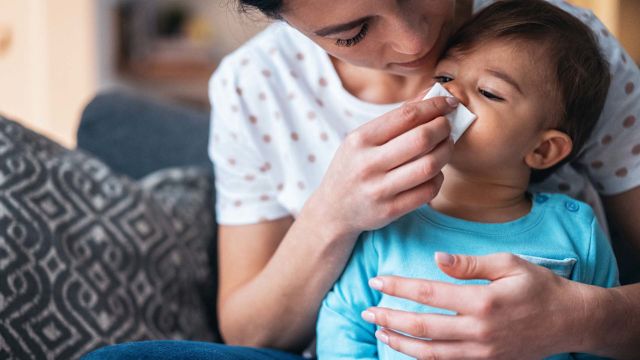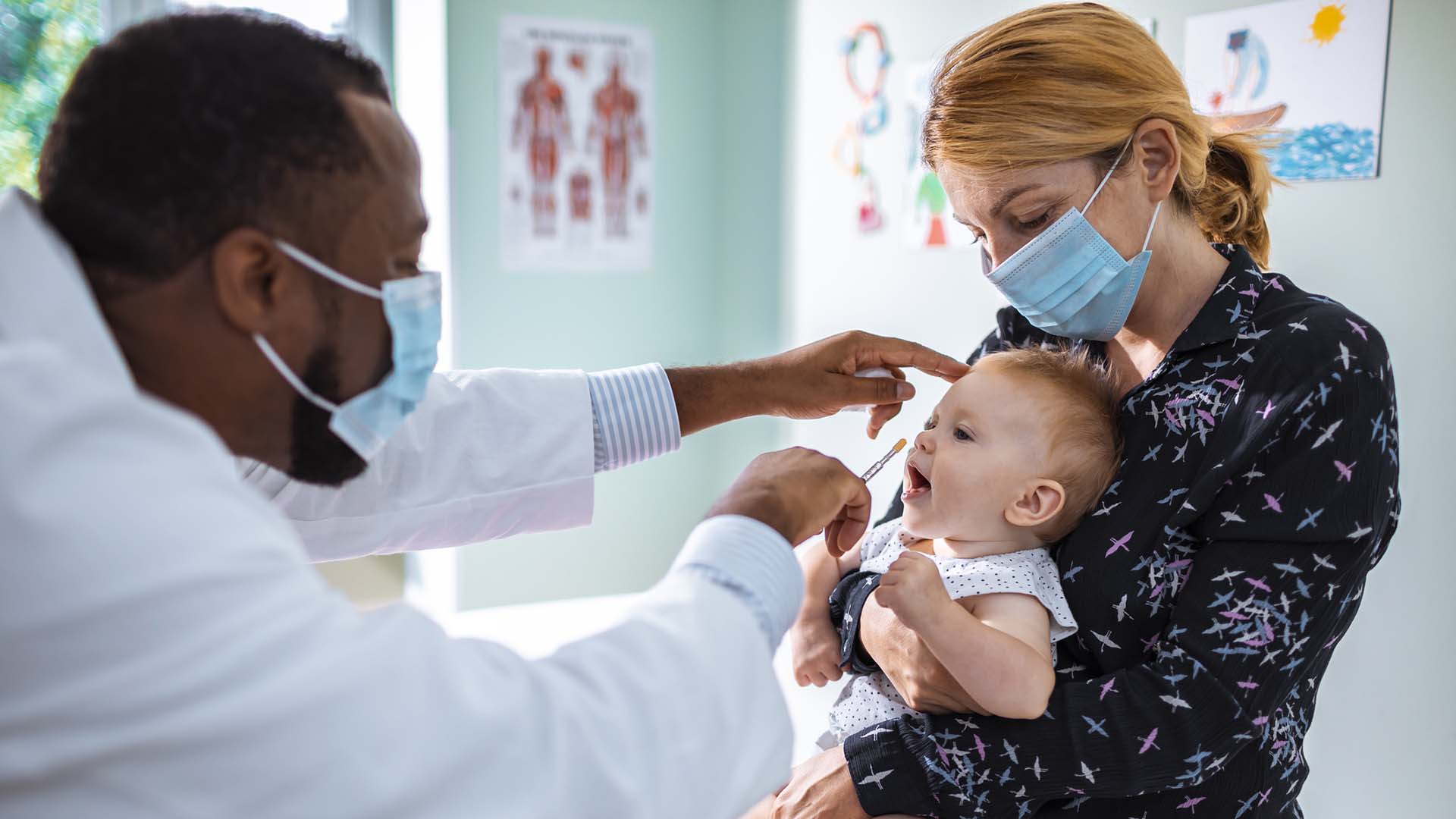Updated on April 29, 2025
If you’ve been around babies and young children, odds are you’re familiar with coughs and runny noses. Cold-like symptoms can be caused by hundreds of different viruses, including rhinoviruses, coronaviruses, and the respiratory syncytial virus (RSV). They affect the upper respiratory tract (the nose, sinuses, and throat) and often include sneezing, a runny nose, congestion, sore throat, a mild cough, and low fever. Kids may also be irritable and not want to eat.
Viruses that cause these symptoms spread easily. Coughing, sneezing, being in close contact with other people and crowds, and sharing cups and utensils can be enough to pass them from one person to another. Some of these viruses can also stay on surfaces—like tabletops, toys, and bedding—for at least several hours.
Kids are especially prone to respiratory viruses. This occurs for several reasons. One is that babies and young children are often being exposed to them for the first time. Their immune systems need time and exposure to learn how to deal with them. Children are also frequently around other children in school or daycare, and they are more likely to touch their faces without washing their hands.
Often, cold-like symptoms are mild and go away after a few days. But occasionally, they can progress into much more serious illness. That can be the case with RSV, the top reason babies in the United States are hospitalized.
RSV in babies and young children
RSV is one of the leading causes of upper respiratory infections worldwide. By the time they reach 2 years of age, most children will have had mild RSV. But if infection spreads into the lower respiratory tract, it can cause inflammation in the large and small bronchial tubes (bronchitis and bronchiolitis) and/or infection of the lungs (pneumonia).
With a respiratory infection, a child may have difficulty breathing or struggle to breathe. They may take rapid breaths, their nostrils may flare, they may make a wheezing sound and/or grunting sound, the chest may cave with each breath (also called belly breathing), and there may be pauses in breathing. The lips, mouth, and fingertips may look bluish due to lack of oxygen. Seek medical attention immediately if a child is having difficulty breathing.
Tens of thousands of children age 5 and under are hospitalized annually with RSV. Very young infants (under 6 months of age) are at a much higher risk of severe disease, and 2 to 3 percent will need to be hospitalized. Children who are born prematurely, who have chronic lung disease or congenital heart disease, or who have a weakened immune system are also at increased risk of severe RSV infections.
Preventing RSV infections
The CDC currently recommends two primary strategies to help prevent severe RSV illness in newborns and infants.
Maternal RSV vaccination
Pregnant individuals are now encouraged to receive a single dose of RSV vaccine between 32 and 36 weeks of pregnancy during RSV season (usually fall through spring in the United States). The immunity created in response to this vaccine will be passed to the baby and will help protect a child from RSV during the first months of life, at the time when they are at the greatest risk for a severe RSV infection.
Monoclonal antibody therapy
Infants who did not receive RSV protection through a maternal vaccination can receive a monoclonal antibody therapy that protects against RSV. Monoclonal antibodies are versions of proteins that fight specific infections (in this case RSV) that are produced in a lab. A single dose of anti-RSV monoclonal antibody is recommended for:
- All infants younger than 8 months who are entering their first RSV season and did not receive adequate maternal immunization.
- Some children ages 8 to 19 months who are at high risk for severe RSV (for example, those with chronic lung disease or congenital heart disease) and are entering their second RSV season.
Monoclonal antibody treatment should be given at the start of RSV season (or just before). An older monoclonal antibody therapy required doses throughout RSV season and may be used in some cases.
Your best source of information about your child’s risk of severe respiratory illness will be a healthcare provider. Talk to your family’s pediatrician about your child’s risk, your concerns, and what preventive treatments are right for your child.






